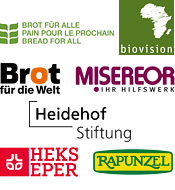News
24.08.2017
Study links rising farmer suicides in India to climate change

Climate change may have contributed to the suicides of nearly 60,000 Indian farmers and farm workers over the past three decades, new research suggests. According to a study from the University of California, Berkeley, crop failures caused by drought and low rainfall during India’s agricultural growing season are pushing farmers into poverty and triggering suicides. The study, published in the August issue of the journal Proceedings of the National Academy of Sciences (PNAS), found that an increase of just 1 degree Celsius during the growing season lead to roughly 70 suicides across the country whenever that day’s temperature was above 20 degrees. An increase of 5 degrees had five times that effect. “The tragedy is unfolding today. This is not a problem for future generations. This is our problem, right now,” said researcher Tamma Carleton. But she projects that today’s suicide rate will rise further as temperatures continue to warm.
According to the UC Berkeley press release announcing the study more than half of India’s working population is employed in rain-dependent agriculture, long known to be sensitive to climate fluctuations such as unpredictable monsoon rains, scorching heat waves, and drought. Heat waves, for example, drive crop losses, which can cause ripple effects throughout the Indian economy as poor harvests increase food prices, shrink agricultural jobs and draw on household savings, Carleton says. During these times, it appears that a staggering number of people, often male heads of household, turn to suicide. “Without interventions that help families adapt to a warmer climate, it’s likely we will see a rising number of lives lost to suicide as climate change worsens in India,” she adds.
For the study, Carleton paired the numbers for India’s reported suicides in each of its 32 states between 1967 and 2013, using a dataset prepared by the Indian National Crime Records Bureau, along with statistics on India’s crop yields, and high-resolution climate data. High temperatures and low rainfall during the off-season, when few crops are grown, did not have the same effect on suicide rates, indicating that the impact on agriculture in the main growing season is indeed the critical link. The study could help explain India’s evolving suicide epidemic, where suicide rates have nearly doubled since 1980, claiming more than 130,000 lives each year. The study indicates that 6.8% of the total upward trend can be attributed to warming that has been linked to human activity. Carleton estimates that warming temperature trends over the last 30 years have already been responsible for over 59,000 suicides throughout India. She argues that these estimates could even be too low since deaths in general are underreported in India and because until 2014, national law held that attempted suicide was a criminal offense, further discouraging reporting.
Carleton hopes her work will help people better understand the human cost of climate change, as well as inform suicide prevention policy in India and other developing countries. “It was both shocking and heartbreaking to see that thousands of people face such bleak conditions that they are driven to harm themselves,” she said. “But learning that the desperation is economic means that we can do something about this. The right policies could save thousands.” The study indicates that protecting farmers and farm workers from major economic shortfalls during these events, through policies like crop insurance or improvements in rural credit markets, may help to rein in a rising suicide rate. The Indian government has already established a $1.3 billion crop insurance plan aimed at reducing the suicide rate but it is still unknown if that will be sufficient or effective. (ab)
16.08.2017
Working with nature: The Push-Pull method can help achieve the SDGs
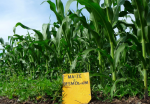
The biological pest management strategy Push-Pull can help achieve the Sustainable Development Goals (SDGs) by contributing to ending poverty and hunger. This is the message of a guest article on IISD’s SDG Knowledge Hub, published by Zeyaur Khan, Programme Leader for Push-Pull at the International Centre of Insect Physiology and Ecology (ICIPE) in Kenya, and Samuel Ledermann, Scientific Advisor at Biovision Foundation, which helps to spread the Push-Pull method from farm to farm. The authors argue that the Push-Pull method is a successful example of how a knowledge-intensive solution to the problem of yield losses to maize crops caused by striga weed and stemborers became a proven technology. It is closely linked to many of the 17 SDGs, adopted by world leaders in September 2015: Push-Pull does not only have a beneficial impact on the implementation of SDG 2, which aims at ending hunger, achieving food security and improved nutrition and promoting sustainable agriculture, they write, but also positively impacts SDG 1 (no poverty), SDG 5 (gender equality) and SDG 15 (life on land).
Maize production in Africa is constrained by two major pests: stemborers, which can cause yield losses of 20-80%, and Striga, a parasitic weed that attaches itself to the maize roots and can cause yield losses up to 100%. By the late 1990s, in search of an ecological solution to stemborers, scientists at the ICIPE, Kenya Agricultural Research Institute (KARI) and Rothamsted Research in the UK developed the biological pest management strategy to control the stemborer. The leguminous plant desmodium is planted in between the rows of maize or sorghum. It then suppresses the growth of the striga weed by natural means. The smell of desmodium repels the stem borer moths and drives them away from the main crop (push). Around the fields, the farmers plant napier grass, which attracts female stem borer moths (pull). They place their eggs in the grass where, once they try to bore into the grass, the hatched larvae die in the sticky substance the grass produces. Soils and livestock also benefit from Push-Pull. Like other leguminous plants, desmodium fixes nitrogen from the air with its root nodules. As of early 2017, the number of adopters in East Africa has reached 140,000 farmers.
According to Khan and Ledermann, at the level of SDG 2, the ability to control these two major pests resulted in on-farm maize yield increases in Kenya from less than 1 tonne per hectare to at least 3.5 tonnes per hectare. Furthermore, adapted for drier climate with drought-tolerant varieties, the climate-smart Push-Pull variant results in yield increases for sorghum from less than 1 tonne per hectare to 2.5 tonnes per hectare. This can contribute to achieving SDG 2 target 2.3 of doubling the agricultural productivity and incomes of small-scale food producers by 2030. With regard to SDG1, the authors highlight that these yield gains correspond with positive returns on investment for farmers. In addition, the two companion plants serve as a highly nutritious extra fodder for the cattle that increases milk production. Farmers can also generate an additional income by selling the remaining napier grass.
At the level of SDG 5, Khan and Ledermann say that Push-Pull is a technology mainly adopted by women due to targeted dissemination campaigns. The programme promoting the adoption of Push Pull is accompanied by community-based seed production whereby women’s groups are multiplying desmodium seeds and subsequently earn additional household income. Since desmodium is a nitrogen-fixing plant, Push-Pull also contributes to SDG 15 by reducing soil erosion, improving moisture conservation and increasing carbon sequestration through a reduced need for plowing. Khan and Ledermann are not alone with their opinion: With over 100 scientific research articles published, Push-Pull is a proven and chemical-free agricultural technology to control pests. (ab)
- IISD's SDG Knowledge Hub: Push-Pull for Addressing the SDGs: Implementing Holistic Agricultural Development Technology
- Push-Pull: A novel farming system for ending hunger and poverty in sub-Saharan Africa
- Globalagriculture.org: Push-Pull in Ethiopia
- UN Knowledge Platform: Sustainable Development Goals
09.08.2017
Indigenous peoples are the best guardians of world’s biodiversity, UN expert
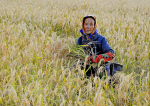
When indigenous peoples’ rights to their lands are protected, they are the best guardians of the world’s forests and biodiversity. However, indigenous peoples are facing acute challenges due to the loss of their lands and the violation of their rights. This is the message of Victoria Tauli-Corpuz, the United Nations Special Rapporteur on the rights of indigenous peoples, to mark the International Day of the World’s Indigenous Peoples on 9 August. It is now 10 years since the UN Declaration on the Rights of Indigenous Peoples was adopted by the UN General Assembly in 2007, but indigenous peoples still face discrimination, exclusion and lack of protection, the UN expert has warned. Even though the Declaration is the most comprehensive international instrument on indigenous peoples’ collective rights, including the rights to self-determination, traditional lands and culture, the lack of implementation remains a major problem. “Indigenous Peoples are still forced from their lands for development and conservation projects, and still face violence and criminalisation when they stand up for their rights,” Victoria Tauli-Corpuz told the British newspaper The Guardian.
It is estimated that there are more than 370 million indigenous people spread across 70 countries worldwide. The United Nations warn that they still suffer from racism, discrimination, and unequal access to basic services including healthcare and education. Where statistical data is available, it shows clearly that they are facing disproportionately higher levels of poverty, lower life expectancy and worse educational outcomes. Indigenous peoples are particularly threatened by the loss of their lands and the violation of their rights over resources, which are pillars of their livelihoods and cultural identities. “Many indigenous communities face intractable poverty despite living on resource-rich lands because their rights are not respected and their self-determined development is not supported,” says Tauli-Corpuz. “Protecting the rights of indigenous women, who are often responsible for both their communities’ food security and for managing their forests, is particularly important.”
According to the Special Rapporteur, the biggest threats are extractive industries, conservation projects and climate change. “Many Indigenous Peoples live on resource-rich territory - in large part because they have protected and preserved that land for generations - making them prime targets for both extractive industries and protected areas.” Tauli-Corpuz criticises that international law still heavily privileges investors and companies despite the fact that the UN Declaration has been accepted as an international norm. “Many Indigenous Peoples are still being dispossessed of their lands by states and corporations, and are being criminalised and assassinated when they fight to protect their lands from being grabbed and polluted by mining and oil companies,” she added. Individuals and communities who dare to defend indigenous rights are labelled as obstacles to progress, anti-development forces, and in some cases, even enemies of the State or terrorists. Tauli-Corpuz also told the Guardian that even projects that are planned as solutions to climate change can sometimes threaten indigenous land rights. “Protected areas are still being established on indigenous lands without their consent, even though indigenous peoples are the proven best guardians of the forest and forcing them from their lands does not improve environmental outcomes,” she said. This view is backed by studies which show that where Indigenous Peoples have secure rights to their lands, carbon storage is higher and deforestation is lower. (ab)
- OHCHR: World still lagging on indigenous rights 10 years after historic declaration, UN experts warn
- The Guardian: ‘Indigenous peoples are the best guardians of world's biodiversity’
- UN News Centre: Protecting indigenous peoples' rights 'is protecting everyone's rights'
- Food Tank: Celebrating International Day of the World’s Indigenous Peoples
07.08.2017
World food prices reach highest level since January 2015, FAO

Global food prices have reached their highest level since January 2015, the UN Food and Agriculture Organization (FAO) said on Thursday. The FAO Food Price Index, which measures monthly changes in international prices of a basket of food commodities, averaged 179.1 points in July, up 2.3 percent from June. Global food prices rose for the third consecutive month in July, driven mainly by higher cereal, sugar and dairy quotations. This latest rise put the Index almost 16.6 points or 10 percent above last year’s level, FAO said in a press release. The FAO Cereal Price Index reached 162.2 points in July, an increase of almost 5.1% from June and 9.5 percent from July 2016. According to the UN agency, this was caused by stronger wheat prices and, to a lesser extent, also by firmer rice quotations. Wheat values rose the most in July, as continued hot and dry weather deteriorated spring wheat conditions in North America.
The FAO Dairy Price Index also rose 3.6 percent from June because of higher prices for butter, cheese and whole milk powder. Although the FAO Sugar Price Index rose by 5.2 per cent in July, it was the first monthly increase since the beginning of the year. The FAO Vegetable Oil Price Index fell 1.1 percent from June to its lowest level since August 2016. “The July slide primarily reflected good production prospects for palm oil in Southeast Asia and weak global import demand,” FAO explained. The FAO Meat Price Index remained steady. An increase in international prices for ovine meat in July was offset by downward price movements in bovine, pig and poultry sectors. (ab)
01.08.2017
Humanity has already exhausted Earth’s natural resources for 2017

August 2 marks Earth Overshoot Day this year – the day humanity has used up the natural resources Earth can regenerate in a year, according to data from Global Footprint Network, an international sustainability think tank. The date is calculated each year by contrasting the world’s demand on nature (ecological footprint) with the biocapacity - forests, pastures, cropland and fisheries as well as the planet’s ability to replenish resources and absorb waste, including carbon dioxide emissions. The world enters ecological ‘overshoot’ this year six days earlier than in 2016. The day has moved up on the calendar from November 4 in 1980 and September 23 in 2000, showing that the world population is exhausting the world’s resources faster than ever. For the rest of the year, we will be living on resources borrowed from future generations.
According to the Global Footprint Network, the estimated level of resources and ecosystem services required to support human activities today is 1.7 Earths. If everyone lived the way Australians do, it would take 5.2 Earths to sustain global consumption. If the entire world followed US citizens’ example, it would take 5.0 Earths. South Korea and Russia are using 3.4 Earths, followed by Germany which is using nature 3.2 times faster than ecosystems can regenerate. The costs of this ecological overspending are becoming more evident in the form of deforestation, drought, fresh-water scarcity, soil erosion, biodiversity loss and the buildup of carbon dioxide in the atmosphere. Carbon emissions are a main contributor to ecological overshoot. “Humanity’s carbon Footprint alone more than doubled since the early 1970s and remains the fastest growing component of the widening gap between the Ecological Footprint and the planet’s biocapacity,” said Mathis Wackernagel, CEO of Global Footprint Network and co-creator of the Ecological Footprint. “To achieve the goals of the Paris Climate Accord, humanity would need to exit the fossil fuel economy before 2050. This would go a long way toward addressing humanity’s overshoot problem.”
But the Global Footprint Network is also confident that the current trend can be reversed. The think tank projects that if we take decisive action to move Earth Overshoot Day back 4.5 days every year, we would return to using the resources of one planet by 2050. For instance, cutting food waste by 50% at global level could move the date by 11 days. In addition, reducing the carbon component of the global Ecological Footprint by half would move the date by 89 days. “Our planet is finite, but human possibilities are not. Living within the means of one planet is technologically possible, financially beneficial, and our only chance for a prosperous future,” said Wackernagel. “Ultimately, moving back the date of Earth Overshoot Day on the calendar is the name of the game.” (ab)
24.07.2017
UN warns 2.1 billion people lack access to safe drinking water
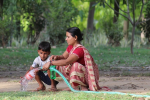
The world has made little progress on sanitation and drinking water, leaving 2.1 billion people without access to safe, readily available water at home and 4.5 billion people without safely managed sanitation. According to a report released on July 12th by UNICEF and the World Health Organisation (WHO) this threatens to expose the world’s poorest to preventable health risks. Of the 2.1 billion people who do not have safely managed water, 844 million do not even have a basic drinking water service. This includes 263 million people who have to spend over 30 minutes per trip collecting water from sources outside the home, and 159 million who still drink untreated water from surface water sources, such as streams or lakes. There are big gaps in service between urban and rural areas. Two out of three people with safely managed drinking water and three out of five people with safely managed sanitation services live in urban areas. Of the 159 million people using untreated surface water, 150 million live in rural areas. “Safe water, sanitation and hygiene at home should not be a privilege of only those who are rich or live in urban centres,” said WHO Director-General Dr Tedros Adhanom Ghebreyesus. “These are some of the most basic requirements for human health, and all countries have a responsibility to ensure that everyone can access them.”
Of the 4.5 billion people who do not have safely managed sanitation, 2.3 billion do not even have access to basic sanitation. This includes 600 million people who share a toilet or latrine with other households, and 892 million people – mostly in rural areas – who still have to defecate in the open, for example in street gutters, behind bushes or into open bodies of water. While billions have gained access to basic water and sanitation services since 2000, faster progress will be required in order to achieve the Sustainable Development Goals (SDGs), which call for ending open defecation and achieving universal access to basic services by 2030. According to the report, in 90 countries progress towards basic sanitation is too slow, meaning they will not reach universal coverage by 2030. With regard to drinking water, the situation looks better. By 2015, 181 countries had achieved over 75% coverage with at least basic services. Australia and New Zealand and North America and Europe are already very close to achieving universal basic drinking water services, while Latin America and the Caribbean, as well as Eastern Asia and South-eastern Asia, are on track to achieve universal access by 2030. Although many people have gained access to basic drinking water, good hygiene remains a problem in many regions. Many homes, healthcare facilities and schools still lack soap and water for handwashing. This puts the health of those people at risk for diseases, such as diarrhoea. As a result, 361,000 children under the age of five die due to diarrhoea each year. (ab)
20.07.2017
UK faces insecure, unsafe and expensive food supplies after Brexit, academics warn

The UK is sleepwalking into a post-Brexit future of insecure, unsafe and expensive food supplies, leading academics have warned. According to a report published on Monday by food policy specialists from three British universities, the UK is unprepared for the most complex ever change to its food system. “Supplies could be reduced, prices could become increasingly volatile, environmental sustainability could be further diminished, safety could be imperilled, inequalities could be amplified, and public trust be undermined,” they write in the 88-page report with the title “A Food Brexit: Time to get real”. The professors warn that the Brexit process is happening at a particularly vulnerable time for the UK food system - a time when it has become excessively dependent upon imports while its productive base is declining. “UK food security and sustainability are now at stake,” said Professor Tim Lang from City University of London, one of the authors. “A food system which has an estimated three to five days of stocks cannot just walk away from the EU, which provides us with 31 per cent of our food. Anyone who thinks that this will be simple is ill-informed.”
The authors criticise that the government is lacking a vision for UK food or agriculture and has failed to warn consumers of the implications even of a ‘soft’ Brexit. “It’s like the rabbit caught in the headlights – with no goals, no leadership, and eviscerated key ministries,” they write. “No-one has warned the public that a Food Brexit carries real risks of disruption to sources, prices and quality,” Professor Lang said. “There is solid evidence about vulnerabilities ranging from diet-related ill-health to ecosystems stress. Food is the biggest slice of EU-related regulations and laws, yet so far the Government has provided next to no details on agriculture and fisheries, and there has been total silence on the rest of the food chain where most employment, value adding and consumer choice are made,” he added. “With the Brexit deadline in 20 months, this is a serious policy failure on an unprecedented scale.”
The report also warns that Brexit could pose serious threats to food safety, standards and quality as the UK is reliant on a vast array of pan-European institutions and scientific infrastructure which keep British food fit to eat. “In the EU, UK consumers and public health have benefited from EU-wide safety standards, without which there will be a risk of the UK having less safe and nutritious products,” said Professor Erik Millstone from the University of Sussex. Another issue addressed in the report is the UK’s dependence on migrant labour. “UK food manufacturing is our largest manufacturing sector but one third of its workforce is migrant. UK horticulture has massive dependency on migrants to pick ‘British’ food UK consumers say they want,” the authors write. They predict that technology will not replace the vast army of migrant labour who work in food service. “The UK’s food system already faces unprecedented challenges on environment and jobs – we see real dangers that these are already being dislocated by Brexit uncertainties,” warns Professor Terry Marsden from Cardiff University.
The report also makes detailed recommendations for each of the key issues explored. The professors call on Government and MPs to publish policy commitment to a low-impact, health-oriented UK food system and to establish a new National Commission on Food and Agriculture to provide oversight and review. They stress that any new food framework needs to commit to the UN Sustainable Development Goals and the Paris climate agreement. “We believe the evidence points to the need for a Food Brexit for Sustainable Development. Brexit must not fudge this opportunity for the UK to accelerate into a food system which delivers sustainable diets from sustainable food systems,” they concluded. “This great Food Transition should improve food security at home, and in countries from which we import food, by lightening the UK’s ‘foodprint’ on the planet, improving public health, reducing the economic burdens from poor diet, enhancing food employment, and more.” (ab)
11.07.2017
Global food prices to remain low over the next decade, OECD-FAO report
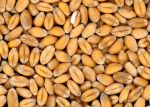
Global food prices are projected to remain low over the next decade as demand growth for food commodities is expected to slow down and biofuel policies have less impact on markets than in the past. This is the key message of the OECD-FAO Agricultural Outlook 2017 - 2026 published on Monday. The report provides ten-year projections to 2026 for all major agricultural commodities, as well as for biofuels and fish. The Organization for Economic Cooperation and Development (OECD) and the UN Food and Agriculture Organization (FAO) say that the completed replenishment of cereal stocks by 230 million metric tonnes over the past decade, combined with abundant stocks of most other commodities, will prevent a rise in prices, which are now almost back to their levels before the 2007-08 food price crisis. “Real prices of most agricultural and fish commodities are expected to decline slightly over the ten-year Outlook period,” said OECD Secretary-General Angel Gurría. But he also warned that is essential that governments continue joint efforts to provide stability to world food markets since unexpected events can easily change these trends.
Over the outlook period, global cereal production is projected to expand by 12%, leading to a total increase by 2026 of 11% for wheat, 14% for maize, 10% for other coarse grains, and 13% for rice. Future growth in crop production will be mainly achieved through higher yields. For example, 90% of the increase in maize production is expected to come from increased yields and just 10% from area expansion. Global meat production will expand by almost 40 Mt over the outlook period. Growth will continue to be driven mainly by poultry production, which is projected to increase by 13%, and a 10% increase in pigmeat. Growth in meat and dairy production is expected to come from both larger herds and higher output per-animal. By 2026, average calorie availability is projected to reach 2,450 kcal per day in least developed countries and exceed 3,000 kcal per day in other developing countries. “But we also know that more food alone is not enough to eliminate undernourishment and other forms of malnutrition,” said FAO Director-General José Graziano da Silva. “Access to the additional calories is extremely important. More challenging is the fight against malnutrition: Fighting malnutrition requires a diversified, safe and nutritious diet, ideally produced with a lower environmental footprint,” he added.
The report projects that per capita demand for food staples may not rise (except in least developed countries), while growth in demand for meat may slow. Over the past years, demand growth was mainly driven by China, where rising meat and fish demand caused the consumption of feed to grow by almost 6% per year, and also by the global biofuel sector, where the use of feedstock inputs grew by almost 8% per year. These trends are not anticipated to continue in the same way over the medium term. Global meat consumption per capita is expected to stagnate at 34.6 kg retail weight equivalent by 2026, an increase of less than half a kilogram compared to the base period. This is due to large low-income groups and changing dietary preferences which will keep “convergence” towards western diets limited according to FAO and OECD projections.
The report states that demand growth for ethanol and biodiesel has weakened due to lower fossil fuel prices and fewer incentives from government policies. Even though energy prices are projected to increase, the derived demand for biofuel feedstocks, especially maize and sugarcane for ethanol and vegetable oil for biodiesel, will grow slowly, except in key developing countries where demand increases are driven by more pro-active domestic policies. Biofuel production is projected to grow by 17% over the next ten years, compared to a 90% increase over the previous decade.
This year’s Agricultural Outlook includes a special focus on Southeast Asia. Economic growth has been strong and the agriculture and fish sectors have developed rapidly in the region, the authors write. They found that this growth has enabled the region to significantly reduce undernourishment in recent years. However, the growth of agriculture and fisheries, in particular in the export-oriented fish and palm oil sectors, has led to rising pressure on natural resources. (ab)
05.07.2017
World hunger on the rise again due to conflict and climate change, FAO

The number of undernourished people in the world has increased again, the Food and Agriculture Organization (FAO) of the United Nations warned on Monday. At the opening of the agency’s biennial conference in Rome, FAO Director-General José Graziano da Silva told member states that conflict and climate change are the main contributing factors behind the rising number of people suffering from hunger. „I wish I could announce here today some good news regarding the global fight against hunger,” da Silva said. “But, unfortunately, it is not the case. Preliminary data available indicate for this year that the number of undernourished people in the world has increased, rising again.” The final numbers will be published in September with the launch of FAO’s annual flagship report, the State of Food Security and Nutrition, but da Silva warned that the world could face the worst food crisis since the Second World War.
FAO currently identifies 19 countries in a protracted crisis situation. “Earlier this year famine was declared in parts of South Sudan. And by the time famine is declared, it means that thousands of people have already died from hunger. Alerts of high risk of famine were also issued for Northeast Nigeria, Somalia and Yemen. Nearly 20 million people are heavily affected in these four countries,” da Silva stressed. These countries are also facing extreme weather events such as droughts and floods. Da Silva said that almost 60% of the people suffering from hunger worldwide live in countries affected by conflict and climate change. The livelihoods of these mostly rural people have been disrupted and “many of them have found no option other than increasing the statistics of distress migration.”
Pope Francis said in a statement that “hunger and malnutrition are not only natural or structural phenomena in determined geographical areas, but the result of a more complex condition of underdevelopment caused by the indifference of many or the selfishness of a few”. It is concrete decisions, he said, that lead to devastating consequences such as war and terrorism. “We are dealing with a complex mechanism that mainly burdens the most vulnerable, who are not only excluded from the processes of production, but frequently obliged to leave their lands in search of refuge and hope.”
According to FAO chief da Silva, “peace is of course the key to ending these crises” but he stressed that “we cannot wait for peace to take action.” He said there is much the world can do to fight hunger during conflicts and protracted crises. Vulnerable people need assistence so that they have the conditions to continue producing their own food. FAO announced its priorities for the next two years would include promoting sustainable agriculture, climate change mitigation and adaptation, poverty reduction, water scarcity, migration and the support of conflict-affected rural livelihoods. Despite the recent setbacks in the fight against hunger, da Silva said that he remained confident that achieving the international community’s goal of eradicating hunger and malnutrition by 2030 is still possible, but only if countries translate their pledges into concrete action. (ab)
29.06.2017
Vulnerable ‘chokepoints’ could threaten global food supply, experts warn

The world’s food security is increasingly reliant on a small number of global trade chokepoints which are exposed to disruptive hazards, a new Chatham House report has found. The UK-based think-tank has identified 14 trade chokepoints of global strategic importance – maritime straits, major port hubs and inland transport networks – through which over half of all internationally traded grain must pass. “A serious interruption at one or more of these chokepoints could lead to supply shortfalls and price spikes,” they warn. More commonplace disruptions may not in themselves trigger crises, but could add to delays, spoilage and transport costs, contributing to higher prices and increased volatility. “We are talking about a huge share of global supply that could be delayed or stopped for a significant period of time,” co-author Laura Wellesley was quoted by The Guardian. “What is concerning is that, with climate change, we are very likely to see one or more of these chokepoint disruptions coincide with a harvest failure, and that’s when things start to get serious.”
The report points out that international trade in food and agricultural inputs relies on a global web of transport systems. A complex network of railways, waterways, ports, sea lanes and storage infrastructure supports the movement of crops and fertilizers from farm or factory to port and from region to region. The most important inland and coastal chokepoints lie in a few ‘breadbasket’ regions. The US, Brazil and the Black Sea account for 53% of global exports of wheat, rice, maize and soybean. Inland waterways carry about 60% of US exports of the four crops (which make up 13% of global exports) to the sea, primarily to the Gulf Coast ports. In Brazil, four ports are responsible for a quarter of global soybean exports. Around 60% of Russian and Ukrainian wheat exports depend on rail to reach the Black Sea. Among the maritime chokepoints, the Panama Canal and Strait of Malacca see the most significant grain throughput due to their positions linking Western and Asian markets. Over one-quarter of global soybean exports transit the Strait of Malacca, primarily to meet animal feed demand in China and Southeast Asia. Chatham House warns that supply chains are only as reliable as their weakest links, and the most critical parts of the global transport network are these junctures.
The report explores three categories of disruptive hazards: First, extreme whether events, including storms or floods, may temporarily cause the closure of chokepoints. Second, security and conflict may arise from war, political instability, piracy, organized crime and terrorism. Third, political intervention and institutional failure may cause disruptions, such as a decision by authorities to close a chokepoint or restrict the passage of food. Almost all major chokepoints had seen a closure or interruption at least once in the past 15 years. In June 2017, overland routes that carry 40% of Qatar’s food imports were closed as part of a blockade. The report says that the risks are increasing as dependency on chokepoints is growing, especially among food-deficit countries which rely on imports. Over the past 15 years, the share of internationally traded grain and fertilizers passing through at least one of the maritime chokepoints has increased from 43 to 54%. A share of 10% now depends on transit through one or more of the maritime chokepoints as the only viable shipping route. Climate change adds to the pressure by increasing the frequency and severity of extreme weather and by threatening the integrity of port operations and coastal storage infrastructure due to rising sea levels. Chronic underinvestment in infrastructure is also a major problem. The US’s inland waterways are old, congested, and vulnerable to drought and flood while Brazil’s roads are poor and often rendered impassable by rain.
Chatham says that chokepoints are systematically overlooked in assessments of food security despite their importance to food prices and supply. The report offers a set of recommendations and risk mitigation strategies to be put in place. Governments should diversify production and global grain supply chains; invest in infrastructure that is climate resilient and cooperate with other governments to develop regional strategic reserves and storage infrastructure. The authors also call on developed food-exporting countries to reform trade-distorting farm support. “Such support promotes systemic reliance on a handful of mega-crops and a small number of grain-exporting regions. Instead, public funds should be directed to supporting alternative sources of grain production around the world, in order to diversify global production and reduce import dependence elsewhere.” (ab)
